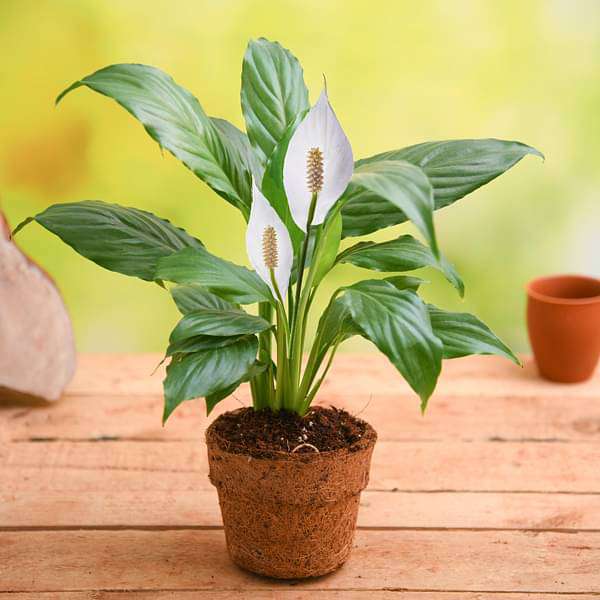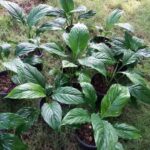Peace Lily Anthurium
Rs. 450.00
or 3 X Rs.150.00
![]()
It has a ability to remove indoor air pollutants and its high transpiration rate make it one of the most valuable indoor plants!!!!!
- with flowers (small 2 feet) = 650/-
- without flowers =450
- Purifies Air
- Beautifies Your Place
- Low Maintenance Plant
- Prevents Mildew Formation
- Absorbs the Acetone Vapors
- Mold Spores Remover
- Best Bedroom Plant
- Safe Houseplant
Contact : 0777 192 230
- Description
- Additional information
- Reviews (0)
Description
The Peace Lily (Spathiphyllum spp.) is a popular indoor plant known for its elegant, white, hood-like flowers and dark green, glossy leaves. Here are some key points about caring for a Peace Lily as an indoor plant:
- Light Requirements:
- Peace Lilies prefer bright, indirect light but can tolerate lower light conditions. They should be kept out of direct sunlight, as too much sun can scorch their leaves.
- Watering:
- Keep the soil consistently moist but not soggy. Water the plant when the top inch of soil feels dry to the touch.
- Peace Lilies are sensitive to overwatering, so it’s essential to allow the soil to dry out slightly between waterings. Yellowing leaves can be a sign of overwatering.
- Humidity:
- Peace Lilies thrive in high humidity but can adapt to average indoor levels. You can increase humidity by placing a tray filled with water and pebbles near the plant or by using a humidifier.
- Temperature:
- Maintain a temperature range of 65-80°F (18-27°C). They can tolerate slightly cooler temperatures but should be protected from drafts and cold air.
- Soil:
- Use a well-draining, high-quality potting mix. A mix designed for orchids or a general-purpose indoor plant mix works well.
- Fertilizing:
- Feed your Peace Lily with a balanced liquid fertilizer every 4-6 weeks during the growing season (spring and summer). Reduce or eliminate fertilization during the fall and winter months.
- Repotting:
- Repot your Peace Lily when it outgrows its current container or if you notice the roots are becoming crowded. Spring is generally a good time for repotting.
- Pruning:
- Remove yellow or brown leaves promptly to encourage new growth. Trim spent flowers at their base to encourage more blooms.
- Toxicity:
- Peace Lilies are toxic to pets if ingested. Keep them out of reach of cats, dogs, and other animals.
- Pest Control:
- Keep an eye out for pests like spider mites, aphids, and mealybugs. If you notice any infestations, treat them promptly with insecticidal soap or neem oil.
Peace Lily (Spathiphyllum spp.) is known for its air-purifying qualities
The Peace Lily is not only admired for its beauty but also for its air-purifying qualities. It helps filter out common indoor pollutants, making it a popular choice for homes and offices. Regular care and attention to its specific needs will ensure a healthy and thriving Peace Lily in your indoor space.
Peace Lily (Spathiphyllum spp.) is known for its air-purifying qualities. It can help improve indoor air quality by removing certain pollutants. The plant is particularly effective at filtering out airborne toxins such as:
- Volatile Organic Compounds (VOCs): Peace Lilies can absorb and neutralize various VOCs, including formaldehyde, benzene, and trichloroethylene. These substances are commonly found in household products like paints, cleaning agents, and synthetic materials.
- Mold Spores: The Peace Lily has been shown to reduce airborne mold spores, making it a good choice for homes with mold sensitivities.
- Airborne Particles: The plant can also capture and filter out airborne particles, acting as a natural air purifier.
While Peace Lilies contribute to a healthier indoor environment, it’s important to note that their effectiveness depends on factors such as the size of the room, the number of plants, and the overall air circulation. Also, keep in mind that the plant’s primary air-purifying action occurs through its leaves, so placing it in a location where it can effectively exchange air is crucial.
Remember to provide proper care for your Peace Lily to ensure its overall health, as a healthy plant is more likely to be effective at air purification. Regular dusting of the leaves and maintaining optimal growing conditions will enhance its air-purifying capabilities.
Additional information
| Weight | 0.250 kg |
|---|















Reviews
There are no reviews yet.